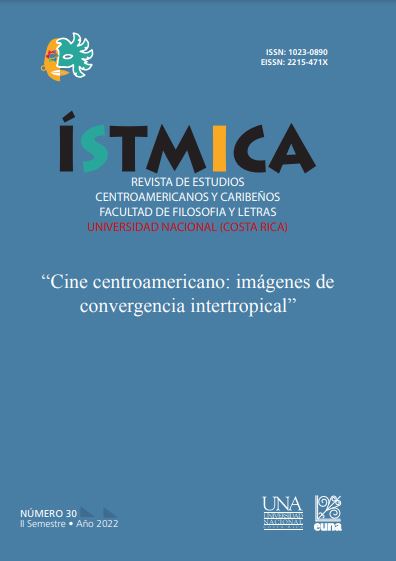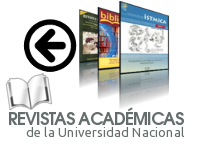New perspectives in the 21st century Central American cinema
DOI:
https://doi.org/10.15359/istmica.30.3Keywords:
cine centroamericano, diversidad, reivindicación, lenguajeAbstract
This article is proposed as a valuable contribution to bring Central American cinema closer to all the people who inhabit the region and to foreigners who feel a particular interest in the cinema made in Guatemala, Nicaragua, El Salvador, Honduras, Costa Rica and Panama. Is Central American cinema made in the 21st century a space for a socio-political reflection? Does the treatment of its themes lead directors to claim causes? How do Central American film directors approach ethics and aesthetics in their artistic productions? Central American cinema research is based on the answer to these questions. An important charge of denunciation accompanies films that contemplate migration in its two aspects, forced and voluntary in search of a better quality of life. The maras are the
backbone of violence together with the re-enactment of civil wars and the disappeared. Collective memory, persecution of indigenous peoples, sexual diversity, the power of religion in its evangelical version, and motherhood as the only response to unwanted pregnancies constitute some of these new perspectives.
References
Cortina, Adela. Aporofobia, el rechazo al pobre. Un desafío para la democracia. España: Paidós Estado y Sociedad, 2017. (Quinta edición).
Sádaba, Javier. El amor contra la moral. España: Arnao Ediciones, 1988.
García Diego, Charo, Aarón Rodríguez Serrano, Antonio Peláez Barceló, Claudia Baricco, Javier Payeras, Javier Tolentino, Jorge Fernández-Mayoralas Álvarez, Karen Poe, Luis A. Leandro Trujillo, María Lourdes Cortés, Miguel Martin, Rafael Gordon, Sergio Valdés Pedroni, Servio Tulio Mateo Ponce. Cine Centroamericano y caribeño siglo XXI. España: Extravertida Editorial, 2021.
Han, Byung-Chul. La expulsión de lo distinto. España: Herder Editorial, 2017.
Qi, Fan. La mirada de Gong Li. Estudio del sujeto actoral femenino en el cine chino. España: Asociación Shangrila Textos Aparte, 2020.
Martin Imer. “La vida en un cine. Cine en serie. Cine en serio” https://lavidaenuncine.wordpress.com/2021/04/25/bertrand-tavernier-el-humanismo-como-arma-de-construccion-masiva/ (consultado el 7 de octubre 2021).
Aprender lengua es fácil. Comentario de dos proverbios de Machado. https://aprenderlenguaesfacil.com/2018/04/29/comentario-de-dos-proverbios-de-machado/ (consultado el 7 de octubre 2021).
Grupos étnicos de América central https://www.mineduc.gob.gt/DIGECADE/documents/Telesecundaria/Recursos%20Digitales/1o%20Recursos%20Digitales%20TS%20licencia%20CC%20BY-A%203.0/02%20CIENCIAS%20SOCIALES/U7%20s%206%20Grupos_%C3%A9tnicos_de_Am%C3%A9rica_Central.pdf (consultado el 14 de febrero 2022).
Published
How to Cite
Issue
Section
License
Las personas autoras que publiquen en esta revista permiten cesión gratuita, exclusiva, de ámbito mundial de sus derechos de autoría a la Universidad Nacional (Costa Rica), conservando únicamente sus derechos morales sobre la obra publicada.
Los artículos pueden ser citados y copiados, citando a la persona autora y la fuente. Todos los artículos publicados en la Revista Ístmica están protegidos bajo una Licencia Creative Commons Atribución-NoComercial-CompartirIgual 4.0 Internacional








